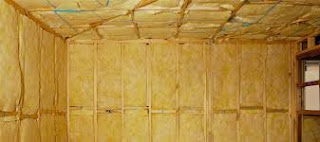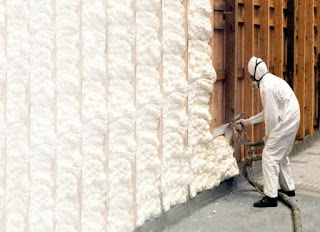15 Things You Didn't Know About How To Insulate Your Attic And Save Energy And Lower Your Power Bill.
Step by step instructions to Prepare and insulation Your Own Attic
Step by step instructions to air seal and protect your loft so your
home does not lose all the warmth it needs to keep you warm this winter.
Getting your upper room up-to-speed with protection is a standout amongst the
most cost impact measures to help your house be more vitality effective.
Heading off to the storage room as a rule implies one of three things.
1. Your 10 years of age and playing find the stowaway.
2. Your 32 years of age and you have one more important legacy to store
away for ever.
3. Your 54 years of age and you've seen a wet spot on the roof and
you're apprehensive the rooftop is spilling.
All these are great motivations to enter the upper room, yet until
further notice, how about we enter the storage room to take a gander at the
protection and decide whether including more protection would be a decent -
house warming - bring down the power charge - thing to do.
Construction laws affecting protection levels did not by any stretch of
the imagination begin to take influence until the mid 1980's. On the off chance
that your house was worked preceding 1984, there is a truly decent possibility
that your storage room has negligible loft protection. Developers in the 1940's
did not protect quite a bit of anything, manufacturers in the 1960's filled the
space between the rooftop rafters with around 4 creeps of protection.
Manufacturers in the 1990's introduced 8 inches ( R-25 to R-30 ) of free fill
fiberglass protection and by the year 2000, protection levels had achieved 12
inches ( R-38 ). Today, contingent upon the homes area, upper rooms are being
protected with 16 crawls of blown-in fiberglass ( R-49 ), cellulose, or destroyed
pants.
Yes, destroyed Levis, I'm not kidding, the tore up pants were being
introduced in a divider as protection.
Upper room protection is vitality proficient in the event that you live
in a frosty atmosphere and you're attempting to keep the warm in and the chilly
out, or on the off chance that you live in a warm atmosphere and you're
attempting to keep the cool in and the warm out.
Dull hued, metal fiber showing up protection is most likely shake
fleece. A well known storage room protection in the 50's and 60's. Genuinely
viable and not a wellbeing risk. In any case, protection granules that are
generally ¼ inch square that vibe like Styrofoam and difference from mirror
gleaming to dim in shading may be vermiculite asbestos. This is awful stuff as
a result of the asbestos content. My encourage to storage rooms with
vermiculite is to have it professionally evacuated. Try not to deal with or
aggravate this protection without the bearing of an expert contractual worker.
Tip - Don't upset handle and tube wiring and don't deal with
vermiculite. Call a master.
In the event that your house was worked before 1940, you should know
about handle and tube wiring. This is dressed bound wiring that is appended to
earthenware handles as it keeps running over wood surrounding structures or
goes through clay tubes when the wire goes through gaps in the encircling or
building material. This kind of wiring should be supplanted by new electrical
wiring by a circuit tester before protecting. On the off chance that you
protect straightforwardly over handle and tube wiring, the wire can warm up and
make a fire risk.
One additionally thing, watch where you step when in the loft, just
stride on the truss or crossbeam confining timber. On the off chance that you
venture between the surrounding individuals you are probably going to stick
your leg through the roof and have one appalling opening to fix and one hell of
a wreck to tidy up before the little ladies returns home.
Tip - to give a place to put your feet while you take a shot at fixing
the upper room floor, take a bit of plywood into the storage room that will
reach more than a few rafters.
Devices and materials required:
1. Fundamental face veil and light coveralls. Fabric or cowhide gloves
and eye security.
2. Drop light so you can perceive what you're doing and where you're
going.
Tip - excavator style head lights work great here.
3. In the event that you have a vent or fireplace running up through
your upper room, or recessed lights or roof fans, you will require a little
move of light weight metal glimmering, 18 to 24 inches wide. One sets of tin
shears.
4. Container of protecting extending splash froth.
5. Container of reasonable universally useful caulk and a caulk weapon.
On the off chance that you have gas machines, likewise get a container of high
temperature caulk.
6. Cardboard vent chutesfor putting between the rooftop trusses at an
indistinguishable area from every eve vent or winged animal piece. Tally what
number of you will require by checking the quantity of eve or soffit vents from
outside the home. The most straightforward device to introduce the chutes is
with a press or tacker stapler.
7. Additional cardboard to use as obstructions to separate regions
where you don't need protection.
8. 1/4 inch, #6 sheetmetal screws and a cordless bore.
Tip - make them begin and threading screws.
Step by step instructions to set up the upper room before introducing
protection:
1. Expel the things you have put away in the storage room that have
been set over the warmed range of your home where you will protect. Things put
away over the carport can remain. Sheets that have been put in the storage room
to store things on likewise should be expelled.
Tip - Have a carport deal.
2. Take the vent chutes and the tacker stapler and introduce a chute at
every area where there is an eve vent. Fit the chute so protection can not
obstruct the vent and a stream of air can move all things considered, through
the eve vent, up through the chute and out into the storage room. Storage room
ventilation is imperative for the soundness of your upper room.
3. With pieces cut from the move of metal blazing and the high
temperature caulk, seal around the vent pipe where the pipe gets through the
roof. Cut a half roundabout example from the edge of the metal and introduce
around the pipe like a neckline, sink put utilizing the sheet metal screws by
spoiling through tabs bowed on the sides of the metal and screwing into the
surrounding individuals from the truss. Put one half neckline on one side of
the pipe and a half neckline on the other. Caulk the space between the blazing
and the pipe with the high temperature caulk.
Tip - when working with the thin metal, wear gloves to abstain from
getting cut by the metal.
4. Presently take the metal glimmering and the tin shears and frame a
barrel around the pipe channels and brick work fireplaces and whatever else
that conveys hot ignition gasses. There ought to be a two inch air space
between the hot vent and the new sheet metal protection obstruction. Utilize
the sheet metal tightens to hold put. These chambers ought to look like
additional tall turtle neck sweaters on a metal neck.
5. On the off chance that you have recessed lighting or canned lights (
same thing), find them in your upper room. More seasoned canned lights that you
can't cover with protection won't be IC evaluated. IC remains for Insulated
Ceiling. The IC rating ought to be unmistakably demonstrated on the mark
connected to the back of the light. Try not to befuddle a UL rating (
Underwriters Laboratory ) with the IC rating. They are not a similar thing. A
UL rating implies the canned light has a cutoff switch introduced that will
kill the light on the off chance that it gets excessively hot. An IC rating
implies it is sheltered to cover the canned light with protection. Air space
between the IC evaluated light and protection is not required.
Tip - Now would be a decent time to redesign the recessed lights to
fixed jars and IC evaluated.
In the event that the canned light is IC evaluated, seal the light
where it gets through the roof with universally useful caulk - your prepared to
introduce protection over the light.
On the off chance that the canned light is not IC appraised, seal the
light where it gets through the roof and any gaps in the light body with high
temperature caulk. Shape a barrel with the metal glimmering and place it around
the light body like you would a pipe leaving a two inch air space. Hold it set
up with the sheet metal screws. This ought to resemble a nursery worker that
puts an open end basin over his young tomato plants so they are shielded from
the chilly. The plant is the can light and the basin is the sheet metal.
6. Find any fumes fans, there could be none, at least one. The fans
ought to have a furrowed or flexable round channel running from the fan to a
fumes point that puts the depleted air outside and not in the loft. Utilize the
generally useful caulk or the froth shower to seal the fan body at the roof.
Utilize the caulk to seal the openings in the fan body. Make certain the
channel is debilitating to an eve vent or a rooftop crest vent. Utilize the
metal blazing and the froth splash to seal the fumes conduit to the eve or
rooftop vent. Bolster the channel with wire or plastic binds to make sure that
the pipe does not tumble down after some time. A fumes fan has a restricted
flapper valve in the fumes fan body just before it connects to the conduit.
Given the possibility, investigate the flapper valve and ensure build up,
clean, hair, dampness and gunk has not left the valve stuck open or stuck
close. The flapper valve is a reverse restrictor, shielding frosty or warm air
from returning the conduit into your home.
Tip-Now would be a decent time to supplanted more seasoned loud fumes
fans. I suggest a fumes fan appraised at 100 cfm (cubic feet every moment ) or
progressively and on the calm side.
7. Presently take the container of shower froth and apply froth to each
gap where an electric wire, T.V. wire, or phone wire enters or leaves the upper
room. Do likewise for the pipes channels. There ought to be vent channels
running up from the storage room floor and out the rooftop. Froth where the
pipe gets through the upper room floor. Try not to froth where the pipe
experiences the rooftop.
8. A few homes, both more seasoned homes and more up to date, may have
open encircling spaces that keep running from the upper room floor down to the
floor beneath. These are spaces that outcome from unneeded space toward the
finish of baths or wardrobes. They possibly the consequence of unpredictable
surrounding, for example, a triangle framed where a wardrobe meets a foyer that
meets a room entryway. These open pursues should be fixed with something beyond
protection. Take a bit of cardboard, slice it to fit over the opening, lay a
globule of universally handy caulk around the lip of the opening, lay the
cardboard on top the caulk and screw down with the sheet metal screws.
Presently you just protect over the cardboard.
Prepared to protect
Apparatuses and Materials Needed.
1. Tape measured-for figuring t




Comments
Post a Comment